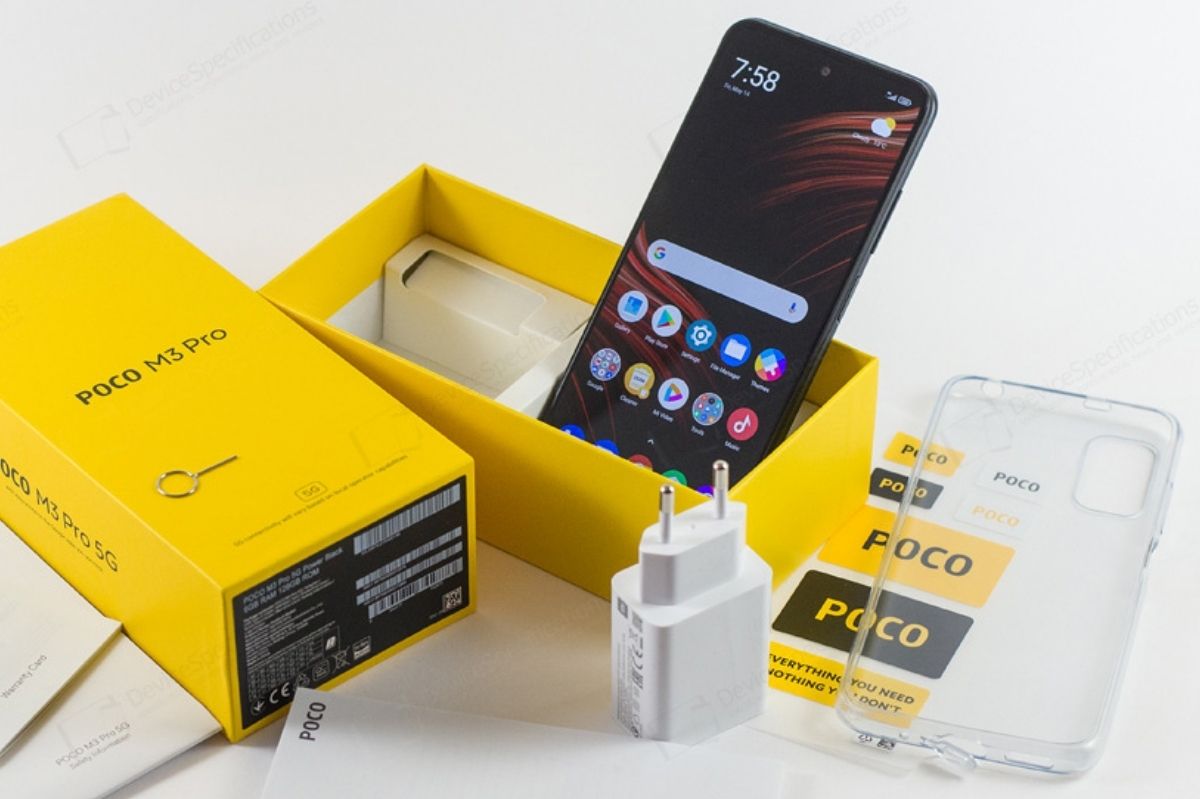Half a year after the launch of POCO M3, the brand has launched an updated version, which could not fail to be called M3 Pro. If the standard variant was proposed as an entry-level in the 4G world, this new terminal, on the other hand, embraces the stage entry level of 5G phones. The price is very competitive, only 159 euros, and there are some really interesting weapons.
If you look at the design, the look of this M3 Pro is really different from that of its younger brother. The main difference can be found, first of all, in the rear chamber module.
The choice made in M3 was really special, and the same can be said of that made on the Pro model.
The lens still offers a triple vertical camera setup, but the large black rectangular design has been removed. The M3 Pro offers a new look in the back cover, with a long vertical band in the upper left corner, and the POCO logo on the inside.
As for materials, M3 Pro 5G does not take a big step forward compared to M3, always offering plastic materials on the back, this time with a mirror coating, which seems to return the feeling of a more precious glass device, even if in reality it is not. Unfortunately, it is a real fingerprint magnet. As long as you continue to clean it, you will never be able to make it truly shine.
On an aesthetic level, the rear design of the M3 Pro 5G may, or may not please, but certainly not deny that the POCO team always tries to offer something different than the competition. The fingerprint sensor is still on the side of the terminal, albeit different from that of the POCO M3, and it also seems to work better.
M3 Pro is equipped with a 3.5mm headphone jack and, above all, the IR sensor, which allows you to control TVs and IR devices, as well as having NFC, which is not present in the standard version of the M3. It’s just a pity that it offers a single speaker, obviously justifiable in light of the cost of the terminal.
Table of Contents
Display
M3 Pro 5G also updates the screen. Although it is still a 1080p LCD unit, the refresh rate increases up to 90Hz, with a substantial change also to the form factor, which is no longer drop-shaped, but with the front camera “embedded” on the front of the screen. The size of the hole is not the smallest, but overall it is a good solution, also because it reduces the shadows right in the vicinity of the hole, compared to what the standard M3 did.
By default, the screen is set to 60 Hz, but the advice is to immediately enable 90 Hz. The difference is absolutely tangible, and clearly visible right from the scrolling of the menus. A small niggle in the display is, probably, the brightness, which always tends to be lower than it would be, and indirect sunlight it can’t really shine.
Furthermore, looking at the screen with a slight inclination (for example when the smartphone is lying on the desk and looking at it transversely), it seems that the brightness is significantly reduced.
Overall it’s certainly a good display, always looking at the really competitive price. Too bad that there are no Always On functions, due to the LCD technology, which also means losing the Super Wallpaper integrated into MIUI.
Performance And Hardware
The real novelty, which has certainly caused hype around the terminal, is the presence of a new processor, exactly Dimensity 700 SOC MTK, one of the entry-level 5G chips available on the market, which still has a 7 nm production process.
According to the tests, for the lovers of numbers, it recorded a single-core score of 541 in our Geekbench 5 tests and in the multi-core test 1586. This is actually not a stunning score, but if we move away from the numerical data, the daily use is not bad at all. Rather.
Unlike its standard M3 sibling, which actually didn’t hide too much lag and slowdowns in the interface, this M3 Pro is much smoother throughout. It is a terminal that allows you to take advantage of the entire Android ecosystem without particular problems.
The transition from one to the other app is always responsive, as is the use of social networks, apps for messaging, browsers for navigation. In this sense, the M3 Pro is a big step up from its younger brother. This greater fluidity is certainly assisted by the 90 Hz display, which in some situations makes the scrolling of the menus really reactive.
At the gaming level, however, it does not show its muscles. It allows you to play practically any title on the store without problems, but you will not be able to start PUBG with HDR graphics and high frame rates, even if the latter can exceed 30 fps if you activate the graphics with low or medium details.
As for the fingerprint sensor, it works better than M3, and is absolutely usable, even if it is not among the fastest and most responsive. The Face ID is present, but it loses a few hits, in less than optimal light conditions.
Also Read : Oppo Find X3 Lite Review: Once Upon a Time There Was The Entry-Level Range
Camera
M3 Pro 5G features a 48MP main camera, flanked by a depth-of-field lens and a macro lens. There is no ultra-wide-angle lens. The photos offer a moderate HDR intensity, while the colors tend to be very saturated when the AI is activated, especially in the case in which flowers or fruit are framed.
Highlight control with AI on isn’t very good, and in general the same can be said for AI-enabled night photos. In short, it is better to disable this mode in many shots.
In general, the shots are sufficient, considering that it is a terminal in the price range of just over 150 euros. The best is achieved in optimal lighting conditions, while a pleasant surprise is portraits, with a depth of field information always processed correctly, even when taking a picture of subjects other than people.
As for the video, the M3 Pro supports 1080P and 720P recording at 30 fps, with image stabilization.
We leave you, as usual, to a gallery of images taken with the terminal:
Autonomy
POCO M3 Pro offers a 5000 mAh battery, with fast charging at 18 W, even if there is a 22.5 W charger in the package. Unfortunately, charging is really slow: it takes half an hour to bring the battery to a little more by 30%, while with one hour of recharging you do not even reach 70%. In total, it takes two hours to fully charge. In any case, you will certainly be able to cover a full day of average use, without any problems.
Conclusions
Compared to the M3, the M3 Pro is a much smoother terminal, and without any lag in everyday use. The 90Hz display is a really nice addition, as is support for 5G networks, which for now are usable by a minority of users. However, considering that the launch price of this device is 159 euros, it turns out to be a smartphone to really take into consideration. At this price, there are
very few competitors.
Pros
- Aesthetically valid
- 90hz display
- Responsive in daily use
- 5G support
- Sufficient room department …
Cons
- But not excellent
- Slow charging
Also Read : Amazon Fire HD 10 Review: Excellent Display In An Affordable Product







